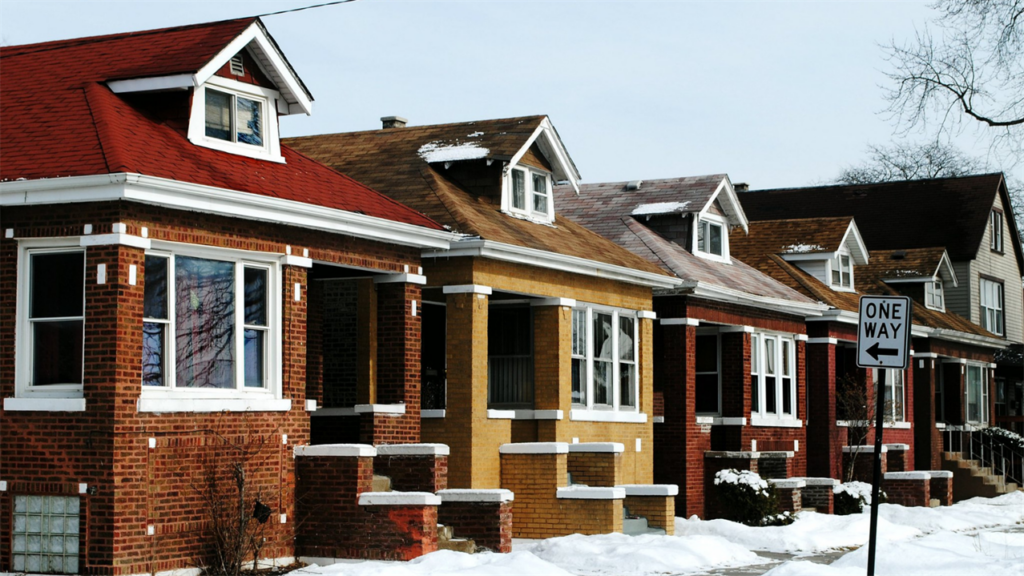Home Prices Are Rising in Black and Brown Communities, but Large Structural Inequities Remain
Property values are rising in south and west side neighborhoods. For existing homeowners, this is good news. But rising property values don’t repair decades of housing inequities or reduce barriers to build wealth for Black and Latinx owners.

2020-21 saw a major boom in demand for homeownership. Professionals with stable incomes working from home and seeking more space or a change of lifestyle coupled with low interest rates sparked a flood of pandemic purchases. According to Crain’s, single family homes in the Chicago region increased in value by an average of 12% in December 2021. Bronzeville, a historically Black neighborhood on the near south side has become one of the hottest new home markets, with townhomes selling for upwards of $500,000, attracting Black professionals and a diversity of new residents seeking more bang for their buck. With increasing home prices most owners also saw a bump in equity, especially for single family homes. Bronzeville isn’t the only community of color experiencing this phenomenon. DePaul’s Institute of Housing Studies cites home prices in Black and Latinx neighborhoods more than doubling compared to majority-white areas. Increased equity and stronger home values must be good news for Black and Brown owners and potential buyers, right? Well, it’s complicated.
While there were modest gains in BIPOC homeownership between 1970 – 2000, that trend has reversed over the past 20 years. Today, the Chicago region has one of the largest racial gaps in homeownership among the country’s largest metro areas (72% of White households own a home, compared to 53% of Latino and 40% of Black households). In Cook County, the homeownership gap is slightly smaller, but the percentage of BIPOC homeowners is even smaller (50% of Latino households and 40% of Black households are owners, compared to 65% of White households). The root cause: structural inequities embedded throughout the homeownership life cycle. From pre-approval to closing, refinancing to selling, Black and Latinx consumers face considerable barriers in securing and maintaining their piece of the American dream.
Lending practices and appraisals often devalue BIPOC-owned homes in all neighborhoods
Recent data from Woodstock Institute show lending institutions denied Black borrowers in Illinois twice as much as their White counterparts for housing-related loans. Latinx applicants were declined 1.5 times more often.
Longtime owners in communities of color may see rising home prices as an advantage and opportunity to build equity in their investment, as these gains may result in greater profits in the current market. However, the perceived benefit is misleading. Homes in majority black neighborhoods are historically worth less than comparable property in white neighborhoods. A concept Brookings fellow Andre Perry, calls devaluation. In his assessment, Perry notes this is especially damaging for homeowners who may be able to acquire a home due to lower price points, but are ultimately limited in their ability to borrow, refinance, or sell at a higher valuation.
This devaluation is aggravated further by discriminatory practices in home appraisals. Properties in Black and Latinx communities are more likely to appraise lower than what a buyer has offered to pay. This can trigger a higher down payment for the buyer and reduced profit for the seller. If an owner is refinancing, it will reduce the amount of cash they can pull out of their home to address large maintenance and repair projects or hinder the ability to leverage equity for common uses, like starting a business or supporting a child’s college expenses.
On the flip side, there are growing accounts of an appraisal gap by BIPOC owners in integrated or majority White communities. More specifically, when these owners stage their home with a White owner, they get a much higher appraisal than when they identify as the homeowner. There are recent plans at the Federal level that aim to curb lending discrimination, but there is much work to be done locally to help close the BIPOC owner gap.
MPC is partnering with stakeholders to create new pathways to BIPOC homeownership
For the last six months, Metroplitan Planning Council has participated in a collaborative, focused on creating pathways to increase homeownership opportunities for people of color in Chicago. The Wealth Opportunities Restored Through Homeownership (WORTH) Initiative sponsored by Wells Fargo, invited select cities in their markets to assemble a local team to assess the current housing landscape. This Chicago team, led by LISC, engaged a broad range of stakeholders to develop strategies for creating 5,000 new BIPOC homeowners by 2025. This is one of many local efforts convening advocates and practitioners to make intentional progress in reversing the racial homeownership gap, which is inextricably tied to wealth building. In September 2021, City Council approved the Lending Equity Ordinance. It requires increased transparency in the lending practices of banks doing business with the City, as well as an annual hearing on lending equity. The effort, led by the Housing Policy Taskforce, was a direct response from housing advocates to the WBEZ investigation into local mortgage lenders exposing significant gaps in lending for borrowers of color.
Over the last two years, we have been forced to re–center everything around our homes. They became our office, schoolhouse, gym, and entertainment center. For most, they are also our largest investment, yet those returns remain elusive for many BIPOC households. Equitable economic recovery requires intentional work on closing the racial wealth gap. Making home ownership a viable option for people of color remains a critical piece of the puzzle now more than ever.
